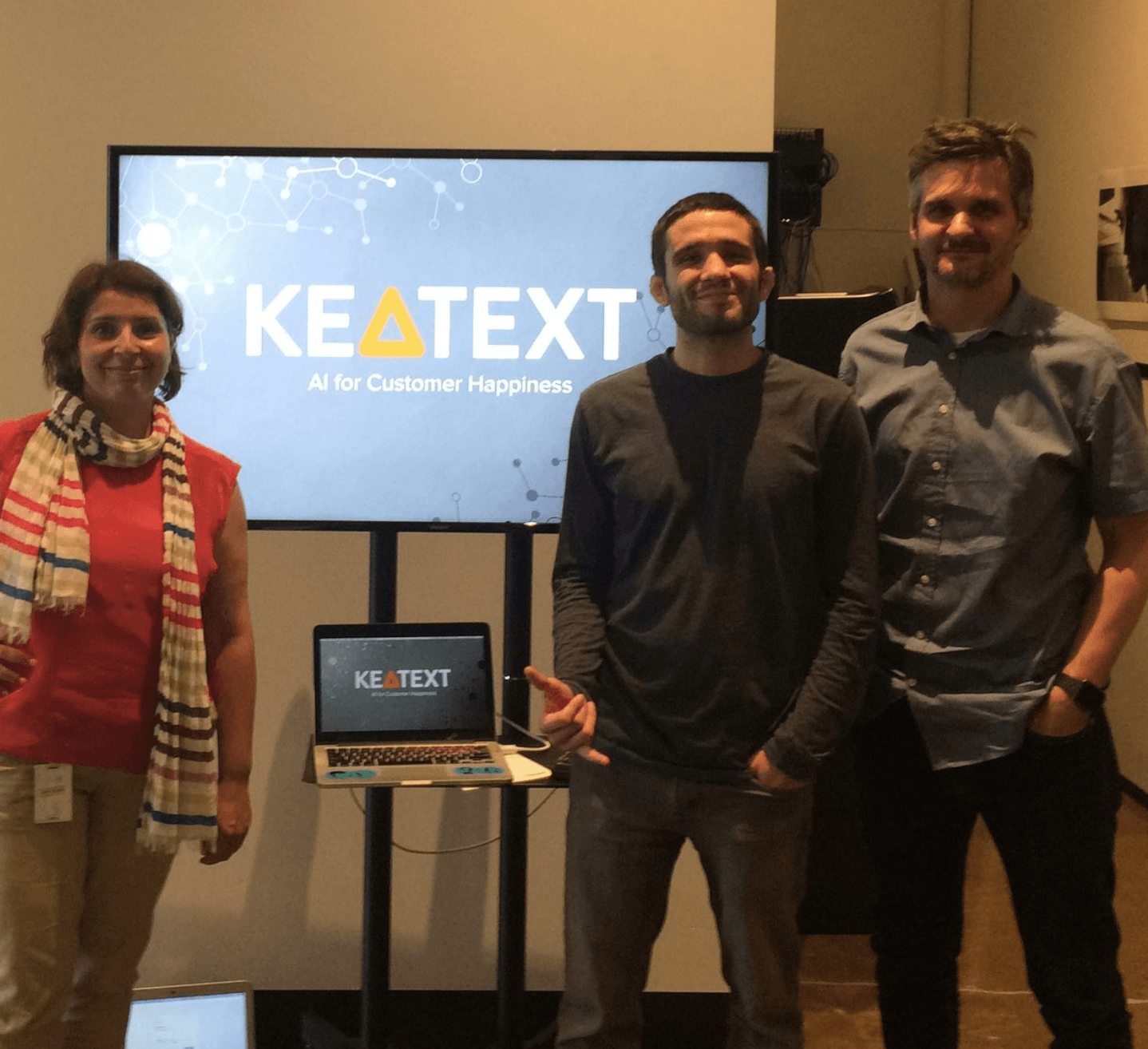
Natural language processing has gained more and more attention with the raise of (or rather, the “fad” of) chatbots. Despite the flurry of press releases from companies about their conversational agents (only a few of which seem to be delivering real business value), few business leaders understand the value of NLP for customer service, sales enablement, or eCommerce.
In this week’s episode of AI in Industry we interview Narjes Boufaden, computational linguistics PhD and CEO of Keatext, an NLP company based in Montreal. Narjes explores the possible business applications of NLP – specifically for customer service and customer experience – and she also explains (in layman’s terms) how NLP systems are trained and integrated into businesses today.
The ROI on this episode (in my opinion), is a firm understanding of what NLP can and cannot do, and what business applications it can realistically solve today. I was fortunate to meet Narjes in person during my Montreal trip, and I’m glad we were able to bring her on the program shortly thereafter.
Listen to the full interview below on Soundcloud:
Guest: Dr. Narjes Boufaden, CEO at Keatext
Expertise: Natural language processing, machine learning
Brief recognition: Narjes received a PhD in computational linguistics from the University of Montreal in 2004 – studying directly under the famed Dr. Yoshua Bengio. She has previously been an adjunct professor at the École de technologie supérieure in Montreal, and a scientist at Montreal’s Centre de Recherche informatique.

Big Idea
“Businesses have assumptions about what leads to customer satisfaction or dissatisfaction – and often these assumptions are wrong. Unearthing genuine patterns of customer issues and satisfaction is one of the critical benefits of NLP in business.”
This interview focuses on two primary NLP use-cases in business, including:
- Routing tickets or support communication – Ensuring that any new message (voicemail transcript, social media post, email, chat, etc) is sent along the the party most able to solve the issue quickly.
- Understanding customer feedback – Finding patterns of sentiment (positive or negative) in huge volumes of customer interactions, and using these insights to determine areas of excellent or improvement within a business.
Both above applications come along with some of Narjes’ insight on integrating and training these machine learning systems, and the factors that make that training easier or harder (which are critical distinctions for business leaders considering applying these technologies in the near term).
(For readers with a more overt interest in NLP, check out our full article on the business applications of natural language processing.)
Interview Highlights with Narjes Boufaden of Keatext
Listed below are some of the main questions that were posed to Narjes throughout the interview. Listeners can use the embedded podcast player (at the top of this post) to jump ahead to sections that they might be interested in:
- (3:15) What are some of the ways that NLP plays a role in improving customer service and customer experience? What is the core ROI of NLP for customer service?
- (6:30) What kinds of tangible insight from customer service data is typically most valuable to a business? Why?
- (10:40) You mentioned that routing tickets or emails to the right department is of high value in business. Can you walk us through a use-case of ticket or call “routing”?
- (14:10) I imagine that NLP involves some “hard coding” or terms and rules – but also plenty of machine learning for detecting new and novel patterns. Can you explain how these technologies work in layman’s terms?
- (21:40) When you initially set up an NLP system to solve customer support issues – what kind of “training” is involved to get the system up and running?
- (24:00) Can you explain more about the data needs required in getting an NLP system up and running well in a business application?











